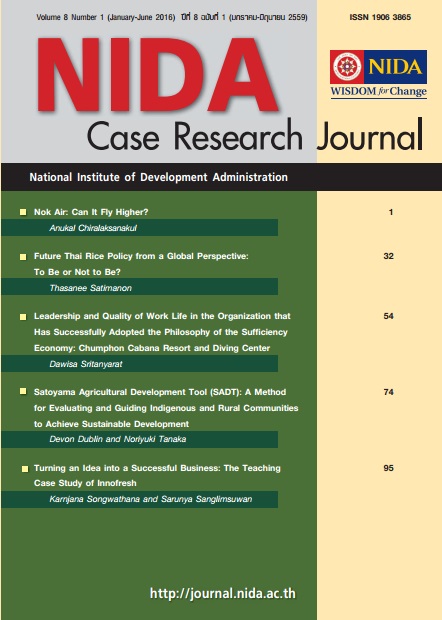Leadership and Quality of Work Life in the Organization That Has Successfully Adopted the Philosophy of the Sufficiency Economy: Chumphon Cabana Resort and Diving Center
Keywords:
Philosophy of Sufficiency Economy, Leadership, Quality of Work LifeAbstract
Rita, human resource and organization development director of her family-owned company, was assigned to launch a project about employees’ quality of work life and sustainable development in the organization, adopting the Philosophy of Sufficiency Economy (PSE). Rita had the idea of learning from an organization which had succeeded in adopting the PSE: the Chumphon Cabana Resort and Diving Center (Chumphon Cabana). Rita learned that the Chumphon Cabana went through a very difficult time of economic crisis, as well as a natural disaster, causing huge debts for the company. The resort is a profit-oriented organization, yet it could align its business strategy with the PSE smoothly.
Meeting with key persons of the Chumphon Cabana, who were believed to be one of the key success factors of the success of adopting the PSE, the concept of managing people working at the resort, and the relationship style among company’s leaders, and employees, were revealed. A strong common understanding of the organization’s objectives and direction, as well as virtue and ethics were also found to be important.
It is important to keep in mind that nature of organizations in different industry could be different from the resort and diving center. Yet it is possible that what was from the Chumphon Cabana could support the adoption of the PSE at her company. Leadership style and characteristics of an organization which had successfully adopted the PSE can be decoded by taking a look at the characteristics of the Chumphon Cabana.





